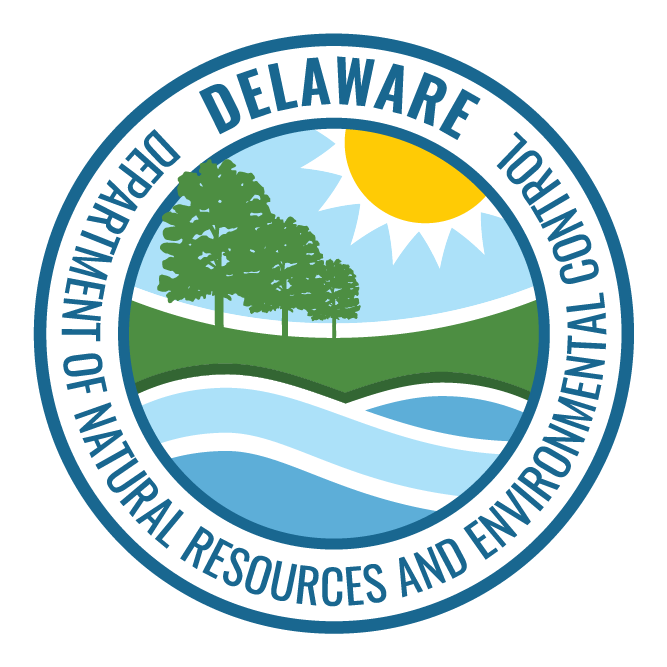Pages Tagged With: "wildlife"
The Perils of Wild Pets: DNREC Warns Against Keeping Non-Domesticated Animals
Around two-thirds of American households have pets, mostly dogs or cats, and many consider them just as much a part of the family as human members. But for a few people, even some of the more unique animals sometimes owned as pets like snakes, parakeets and hamsters aren’t enough — they want to keep wildlife. Find out why animal experts say it’s generally bad to take in wild animals in this offering from Outdoor Delaware.Wild Turkey Surveys
Since 2010, the DNREC Division of Fish and Wildlife has used an annual, volunteer-based survey to record observations of wild turkeys across the state during the months of July and August. The survey generates an index of annual turkey productivity and recruitment (the ratio of young birds to adult females). The surveyAquatic Resources Education Center
The Aquatic Resources Education Center, operated by the DNREC Division of Fish and Wildlife, focuses on wetlands, fishing and other aquatic education themes.Contact Us
Mary Rivera Aquatic Resources Education Center 2520 Lighthouse Road Smyrna, DE 19977 302-735-8666
Trapping and Furbearers
Technically, furbearers include all mammals that “bear fur.” However, furbearers have traditionally been classified as mammals that are trapped or hunted primarily for their economic value – their fur. Like many other species, furbearers must be managed in a sustainable and ecologically sound manner to ensure healthy populations throughout Delaware. [column md=”5″Delaware Wildlife Action Plan
After over eight years of implementing the 2015 Delaware Wildlife Action Plan, the DNREC Division of Fish and Wildlife has begun a comprehensive review and revision of the Plan to ensure the document remains up to date with the best available science and continues to serve the needs of Delaware’s wildlife. TheDivision of Fish and Wildlife
The DNREC Division of Fish and Wildlife conserves and manages Delaware’s fish and wildlife and their habitats, and provides fishing, hunting, wildlife viewing and boating access on approximately 68,000 acres of public land. The division oversees wildlife resource conservation and control of mosquito populations and offers hunter, boating and aquatic education programs. It provides licensesAmerican Oystercatchers
American oystercatchers are black and white shorebirds with bright orange beaks that feed and nest on the beach. The Beach-Nesting Bird Program monitors the population and productivity of American oystercatchers in Delaware. An American oystercatcher incubating a nest. (Photo: Henrietta Bellman) These birds begin arriving in Delaware in March, startLeast Terns
Least terns are the smallest species of tern in North America, with an orange-yellow beak and mask-like black markings on the head. The Beach-Nesting Bird Program monitors the population and productivity of least terns in Delaware. A male and female least tern conducting a courtship ritual. The male presents the female withBeach-Nesting Birds
Dwindling shorebird populations have landed several species on Delaware’s Endangered Species List. The DNREC Beach-Nesting Bird Program monitors the endangered breeding shorebirds, provides habitat protection, and provides information to the public about beach-nesting species. The Beach-Nesting Bird Program primarily focuses on three species — Piping Plovers, American Oystercatchers and LeastMosquito Control
DNREC’s Mosquito Control Section provides mosquito control services throughout Delaware to maintain quality of life and protect public health by reducing the possibility of mosquito-borne illnesses. For help with nuisance mosquitoes where you live, call one of our field offices: The Northern Delaware Office, 302-836-2555, serving New Castle CountyExploring Delaware’s Open Spaces
Take a journey with us as we explore some of the unique properties acquired through the Delaware Open Space Program administered by the DNREC Division of Parks and Recreation and the DNREC Division of Fish and Wildlife.Drawn to Herons: An Illustrated Story
Join DNREC designer Christy Shaffer as she takes us on an illustrated journey to discover the beauty of herons found in Delaware.Wildlife Viewing in Delaware’s State Wildlife Areas
The Delaware Department of Natural Resources and Environmental Control (DNREC) provides numerous outdoor recreation opportunities on public lands, including elevated wildlife-viewing structures on several state wildlife areas managed by the DNREC Division of Fish and Wildlife. Wildlife Area Maps [button type=”primary” block=”true”Delaware Whitetail Deer Records
The DNREC Division of Fish and Wildlife maintains records of the top hunter-taken whitetail deer in Delaware, using the Boone and Crockett scoring system. The records include whitetails taken in any year. State Deer Rankings All-Time Typical Whitetail Deer Non-TypicalSharks in Delaware Waters
If you’re swimming in Delaware waters, particularly in the ocean, you’re probably swimming near sharks. But they actually have more to fear from us than the other way around.Deer Stands or Ground Blinds on State Wildlife Areas
The DNREC Division of Fish and Wildlife requires hunters to register temporary deer stands or ground blinds they place on state wildlife areas.Contact Us
DNREC Wildlife Section 302-739-9912
Delaware Hunters Against Hunger
Delaware’s deer hunters share part of their harvest each year with Delawareans in need. They provide thousands of pounds of venison through the Delaware Hunters Against Hunger program. Delivering boxes of venison to a food distribution hub. All donated deer are processed into ground venison, free of charge. TheWildlife Mortality Survey
If you see sick wildlife, or dead wildlife where it looks like the cause of death is an illness, please report it to the DNREC Division of Fish and Wildlife. If you see five or more sick or dead wild animals at the same location, please also call division staff at 302-735-3600Reporting Sick or Dead Wildlife
Wildlife disease surveillance, prevention, and control are crucial factors for safeguarding Delaware’s citizens, wildlife, pets, and livestock. Citizen reports help state biologists monitor wildlife populations in Delaware. If you seeVolunteer With the Piping Plover Program
To ensure continued breeding success, the DNREC Piping Plover Program depends on volunteers to help inform the public about the breeding progress of the plovers and the importance of staying out of closed areas.Contact Us
Shorebird Project Staff 302-735-3600




